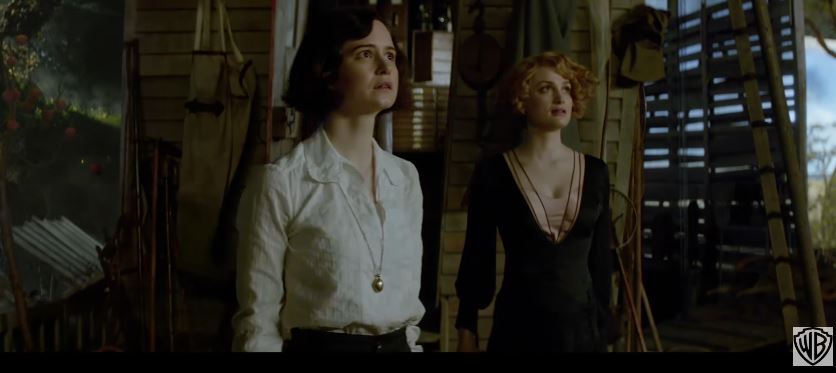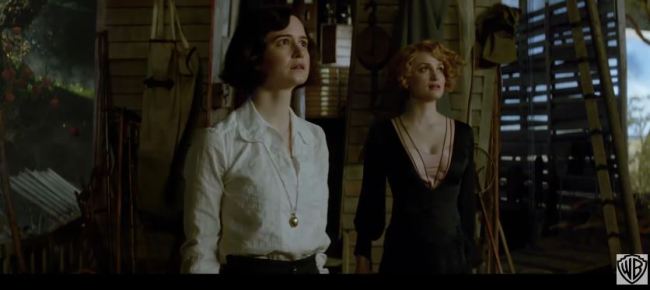The Women of Fantastic Beasts Speak On Femininity and Preconceived Notions About Feminism
"There were loads of women in the '20s who were writing and working in the man's world and getting by."

For those of us who could never let the Harry Potter Universe go away for good, Fantastic Beasts and Where to Find Them is a welcome journey back to that. The difference, however, is that the story takes place in New York City in 1926—decades before Harry and company roamed Hogwarts trying to uncover Voldemort’s big plan. While there are some familiar elements—namely that never-ending fight by wizards to hide magic from muggles (who are called no-majs in this one)—we’ve also been introduced to a new core group made up of Eddie Redmayne as Newt Scamander, Katherine Waterston as Porpentina Goldstein, Alison Sudol as Queenie Goldstein and Dan Fogler as Jacob Kowalski.
Even as the story centers on Scamander’s great adventures, I can’t ignore the women who also play a major part, especially since this movie takes place just seven years after women were granted the right to vote. For Waterston, who plays the pantsuit-wearing Porpentina, the role was an opportunity to look back at the strong women who came before her.
“I thought a lot about my grandmothers,” she told The Mary Sue. “One of them was a secretary in New York and took the elevated trains that are no longer in the city but are in our film. I thought about her, a young woman in New York, and my other grandmother who was a total punk and was, obviously, a pre-feminism feminist…And was an artist, and was very independent-minded and courageous and smart. It didn’t seem to me that it’s improbable that there were women like this back then. There’s always been women like that, I think.”

And while Porpentina might wear pants in the film, it really wasn’t the first choice for the character. Costume designer Colleen Atwood pulled skirts for the initial fitting but Waterston says she thought Porpentina was “so practical and this seems like a hard thing to run around the city investigating in.” And that’s how a lot of the women of the era ditched skirts for pants. With the men off to war and the women working in factories, loose clothing proved to be a safety hazard when in close proximity of heavy machinery.
“If you had some kind of practical labor to do or work to do and you couldn’t do it in a skirt, you put on the trousers,” she added. “And then it started to represent something, maybe a movement towards the thing we’re still clawing away at—equal pay and rights and everything. I think now, post-feminist movement, we have this idea that before it was all lousy for women and I actually think there were loads of very independent, smart cool women working like Dorothy Parker. There were loads of women in the ’20s who were writing and working in the man’s world and getting by. So it was cool to be at least a fictional representation of those women.”
I admit to being guilty of this over-generalization of the women back then as pants-wearing feminists fighting for equal rights when, in reality, there were plenty who also thrived in skirts and dresses. That’s why I appreciate that Fantastic Beasts also features a woman like Queenie who is so secure in her femininity. The fact that she enjoys dressing up and revels in her sexuality without ridicule is just as empowering as watching Perpentina donning masculine garbs for practicality. Sudol also shared a special connection to her character, probably because it helped her work out a few issues of her own.
“I don’t necessarily do my nails all the time. I’m not like a ‘girly girl,'” she continued. “When I was doing all the screen tests, I was always focusing on Queenie’s empathy and her heart and her warmth and her love…And then, I got into the costume and the hair and the makeup and the nails and all of these very feminine clothes and there was a tiny moment where I felt like I needed to be more feminine than I was comfortable with. Like, was I being feminine enough in myself? And so I lost my center a tiny bit and was kind of being my idea of what a beautiful woman would be.”
Thankfully, director David Yates stepped in and gave her a bit of advice which also doubled as a great personal affirmation. “He was like, ‘You don’t need to do that…Trust your instincts. You don’t need to be more than what you are.’ I think, as an actress, that was such a beautiful note. But also, it was quite healing for me on a weirdly deep level of just being is enough. And I think as women, sometimes we feel like we need to be more in order to be enough. And it’s liberating when you just realize…just be yourself and that is livable.”
Fantastic Beasts and Where to Find Them comes out in theaters on November 18th.
(image via screencap)
Want more stories like this? Become a subscriber and support the site!
—The Mary Sue has a strict comment policy that forbids, but is not limited to, personal insults toward anyone, hate speech, and trolling.—
Follow The Mary Sue on Twitter, Facebook, Tumblr, Pinterest, & Google+.
Have a tip we should know? [email protected]